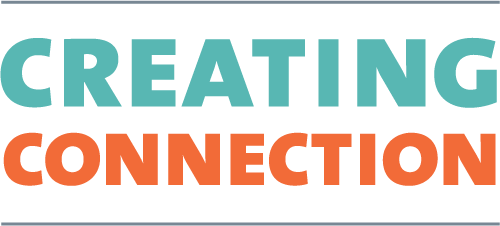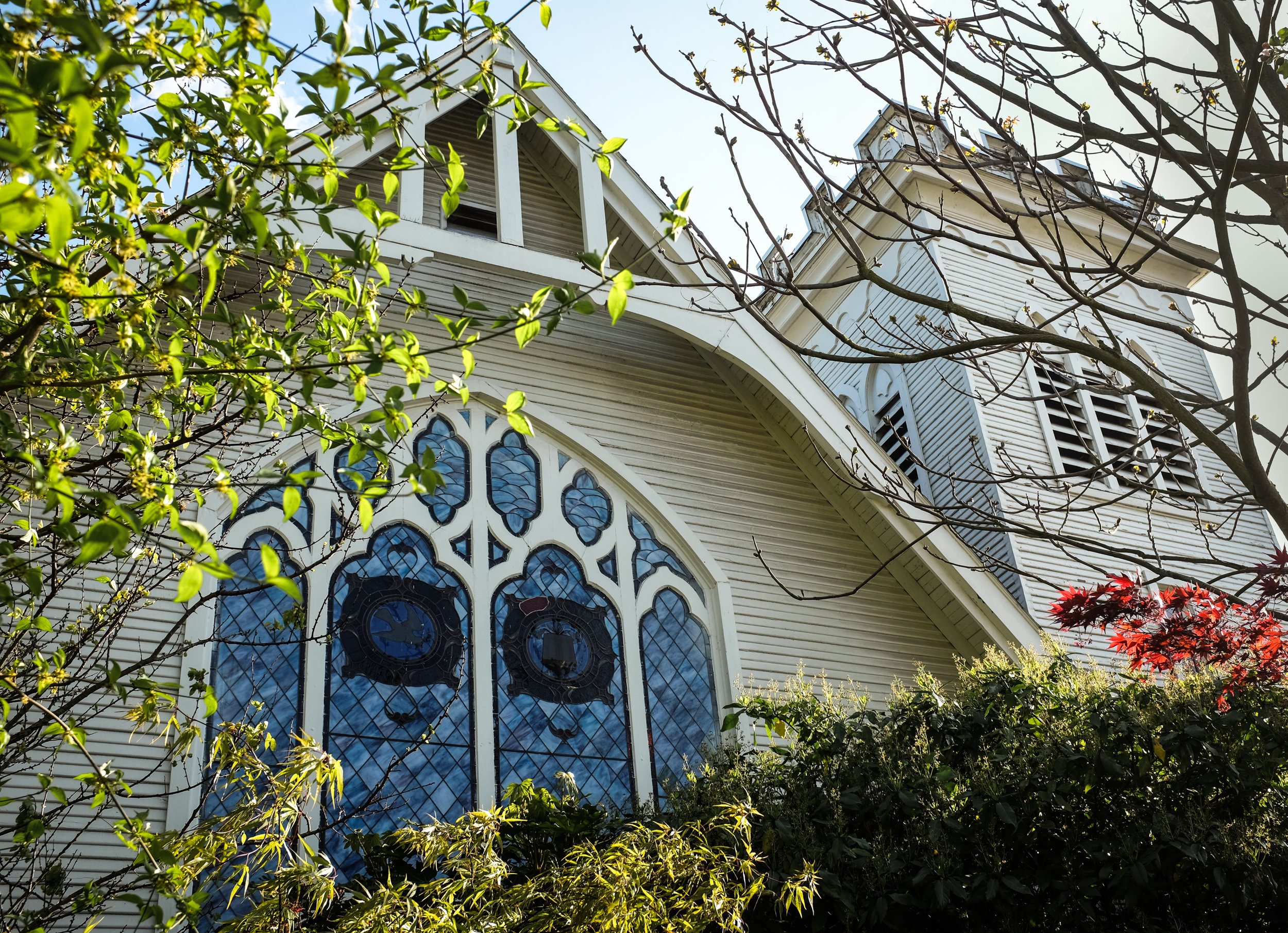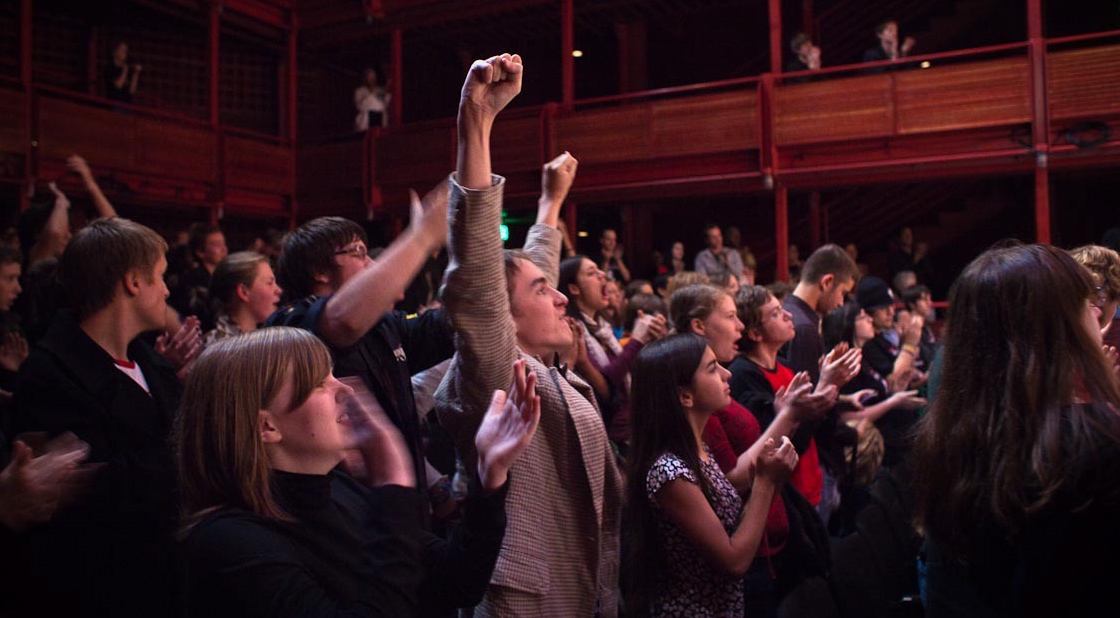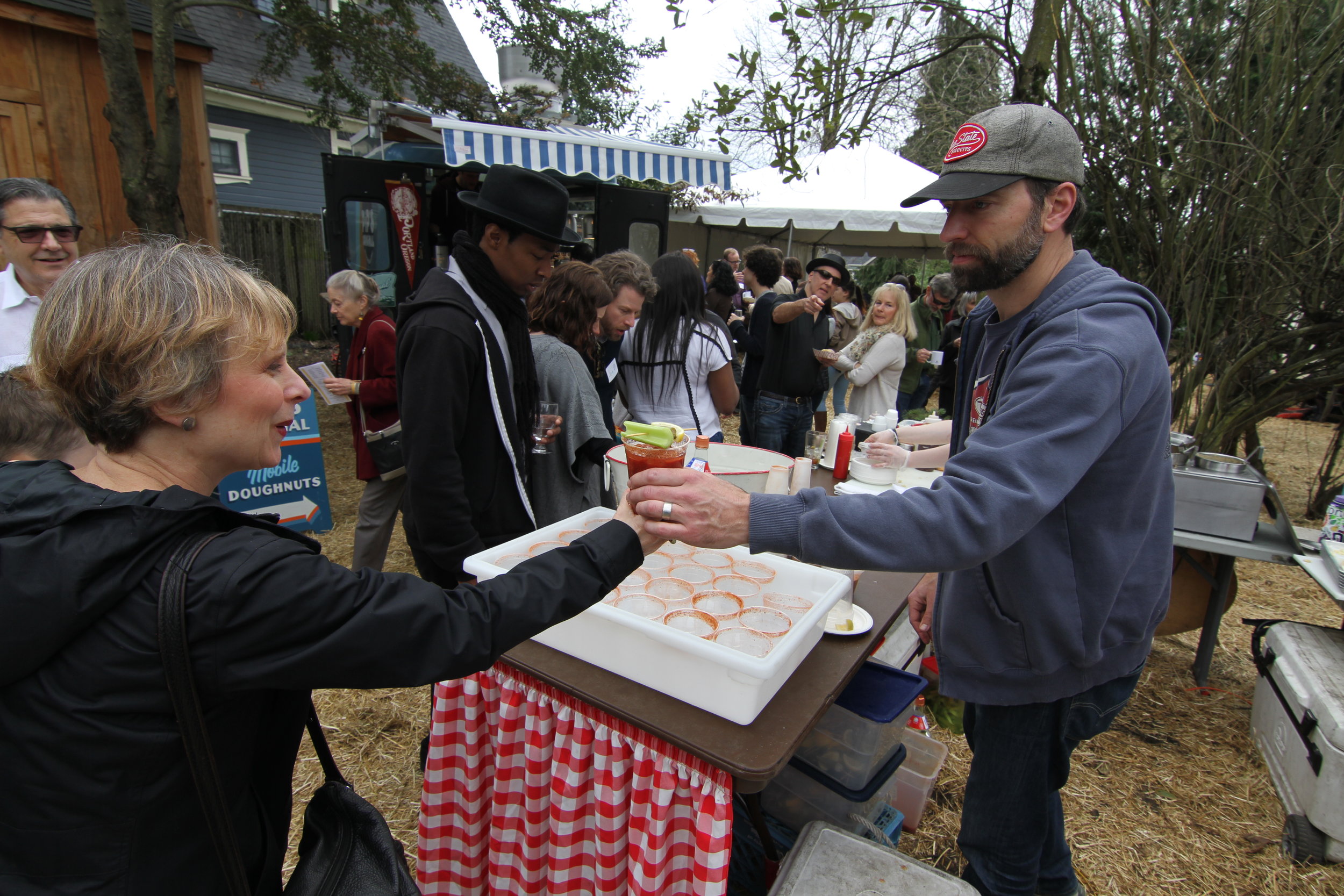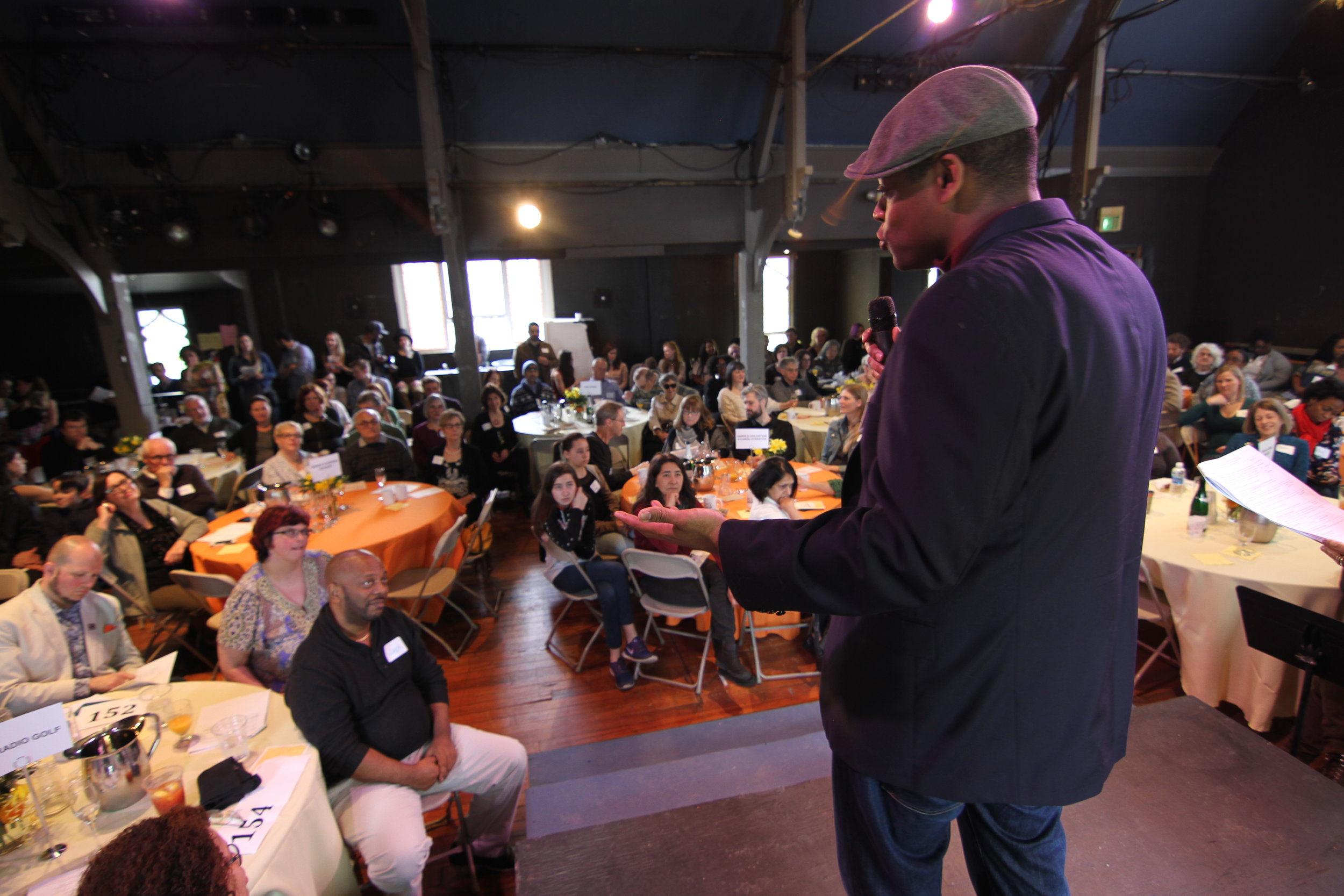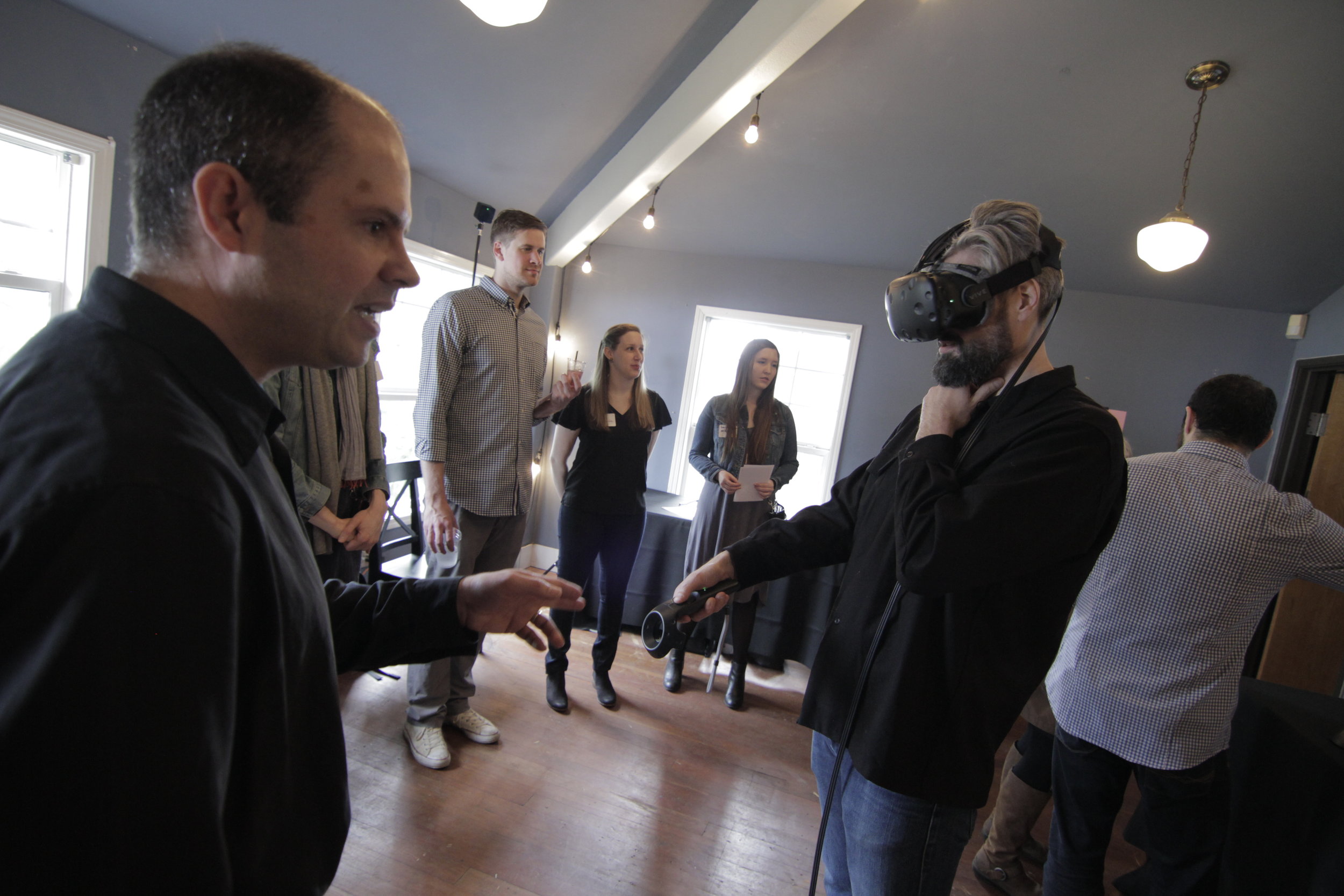When Portland Playhouse’s Artistic Director Brian Weaver first heard the Creating Connection research and recommendations, he was skeptical:
"What would it mean for professional artists if, as a field, we began saying, ‘Everyone is an artist?’ Would that make us less special, less fundable, less valuable to society?"
Ultimately, Weaver became convinced that rethinking the way we talk about art may have potential to engage larger audiences. They’ve since replaced “arts and culture” with “creative expression” as the primary label for what they do. And they have removed the “us/them” binary from the way they think, talk, and create programs.
Audience takes the stage
The theater invited a youth orchestra serving children through intensive orchestral instruction as a pre-show to A Christmas Carol. While this one-off event required flexibility on the part of their stage manager and union actors to change the pre-show experience, the organization recognized the added value of highlighting the creativity of these students and offering the audience a broader view of all the expressive outlets in their community.
Another example of Creating Connection’s influence can be seen around programming for Martin Luther King Day. Rather than offering a traditional presentation or performances by professional artists, Portland Playhouse community members participated in a shared choral reading of Dr. King's “I have a Dream”. 60 audience members took turns reading in a big circle and filling the space with their voices. The event started with socializing, was followed by a short rehearsal, and concluded with a joint reading of the entire speech and a potluck. In addition to honoring the legacy of Dr. Martin Luther King Jr., the event demonstrated that everyone has a voice and is capable of sharing this story together.
Rise and shine
Creating Connection has even influenced Portland Playhouse’s approach to fundraising. For their annual gala in 2017, they scrapped the traditional formal wear-meets-multi-course-meal approach to offer a fresh, exciting spin on the event: they served brunch, catered by local food trucks and complete with a build-your-own Bloody Mary bar, where attendees could get creative with their cocktail. Small changes like these shook things up and made people more open to participate.
And participate they did. Rather than renting a banquet hall, Portland Playhouse held the event at their own space, a converted church in Portland’s King neighborhood. The theater opened the entire building so attendees could explore the offices, dressing rooms, and yard. Small changes like these shook things up and made people more open to participate.
They created small “creativity pods” throughout the building
A professional opera singer belted out arias on stage. Attendees tried on costumes and snapped selfies in the photo booth. An open mic jam session became a Hamilton singalong. Kids made art projects in a craft room.
People toured a post-renovation Portland Playhouse using virtual reality headsets. And everyone was invited to contribute to a time capsule to be buried in the walls of the renovated space.
The power of coming together
While the Creating Connection concepts have influenced programming and messaging choices within Portland Playhouse, Brian sees the program as much greater than their organization.
"Once we are all in this together, just think how easy it will be to pass legislation, build sustainable funding sources, and fill the seats of theaters, concert halls, stadiums, and living rooms, for the celebration of the creativity that bring us into connection with each other and ourselves."
Your turn
Shaking up your organization doesn’t have to be hard. We have developed a message guide and set of tools to help you apply Creating Connection in your own work and programs. Get started telling stories that help people grow, give communities a voice, and contribute to people's happiness and well-being.
